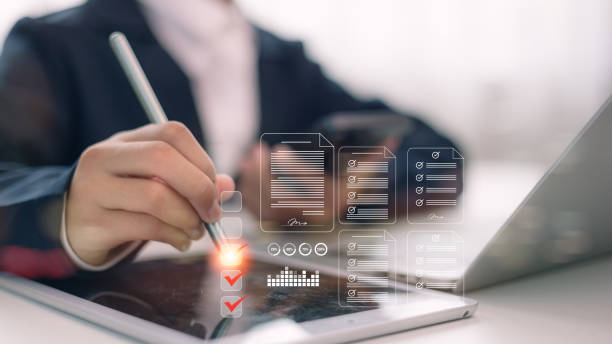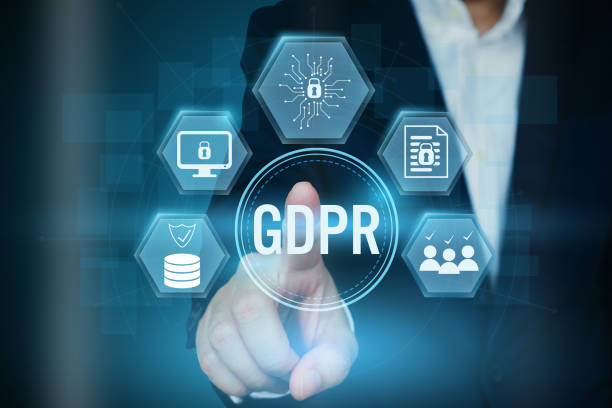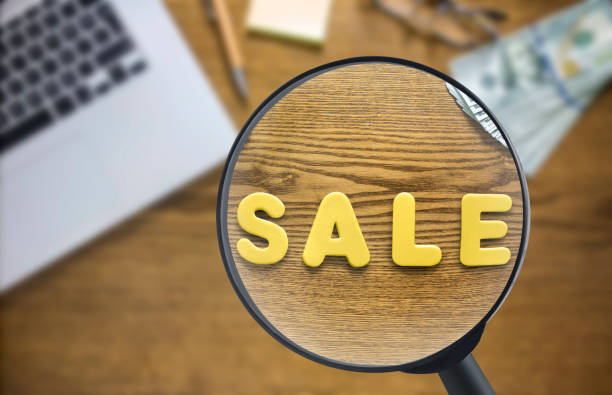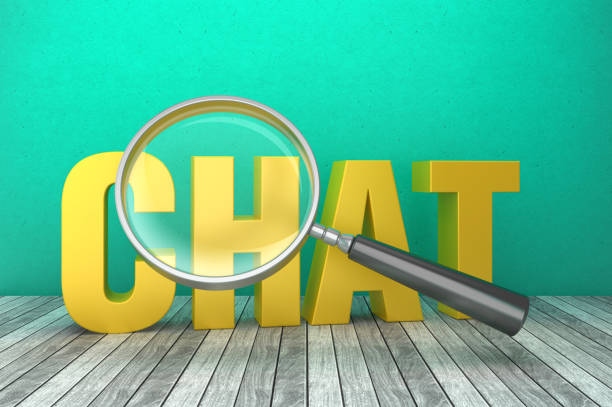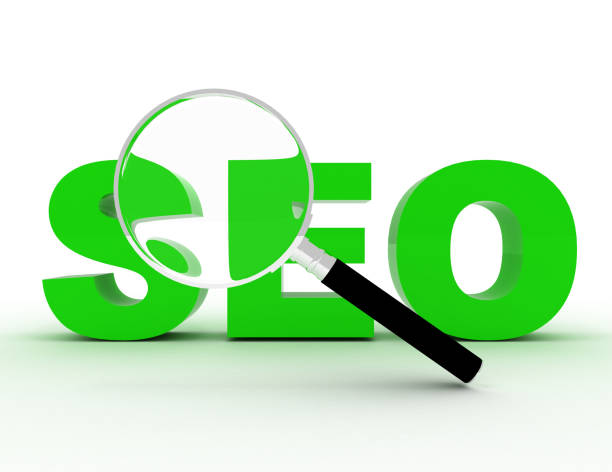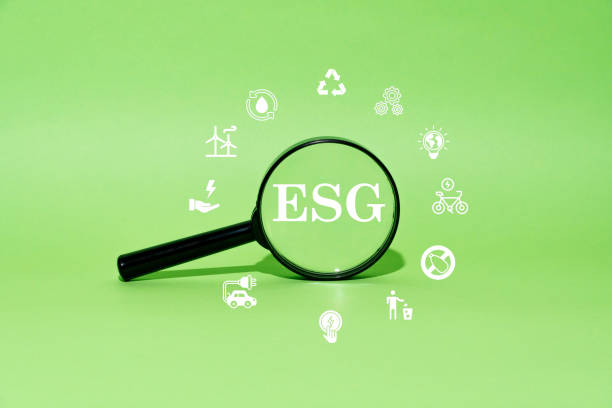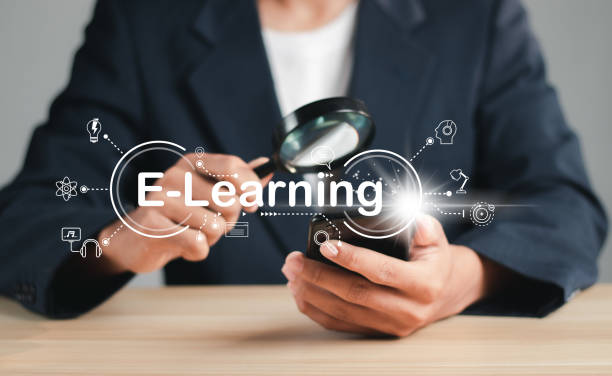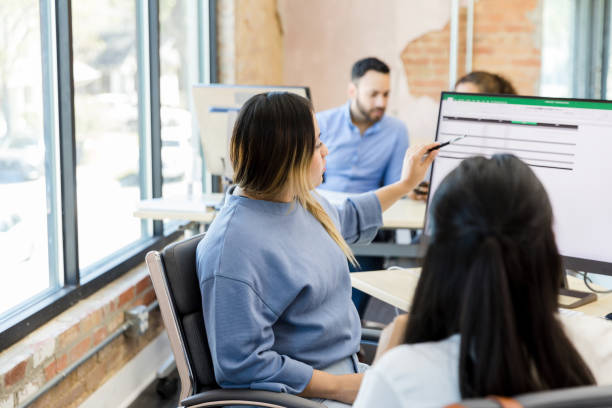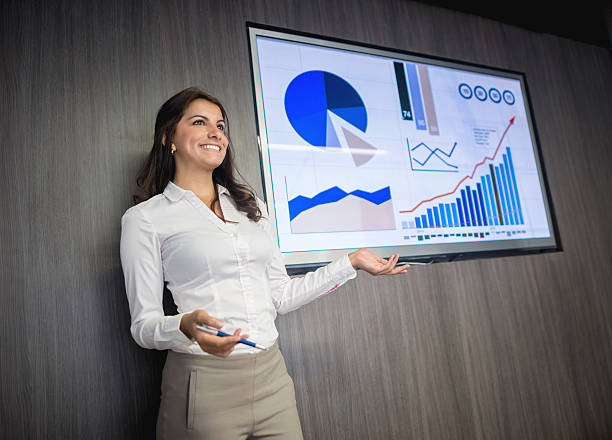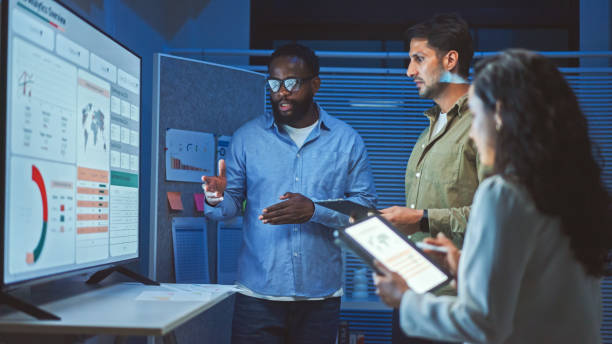What is On-Page SEO and Why is it Important?
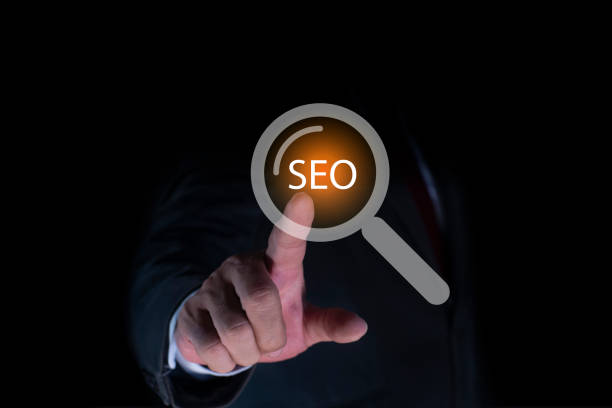
On-Page SEO is a set of techniques and actions performed within a website to improve the site’s ranking in Google search results and other search engines.
The main goal of On-Page SEO is to optimize the content and structure of the website for search engines and users.
The importance of On-Page SEO lies in the fact that it helps search engines better understand the content of the site and provide users with the most relevant results.
By correctly implementing On-Page SEO, you can increase your website’s organic traffic, improve conversion rates, and ultimately achieve your business goals.
For example, optimizing title tags and meta descriptions, improving page loading speed, and creating high-quality, relevant content are among the most important aspects of On-Page SEO.
SEO is an ongoing process and requires review and updates.
Did you know that 85% of customers check your company’s website before any interaction?
Build a corporate website worthy of your reputation with Rasaweb.
✅ Increase customer credibility and trust
✅ Attract high-quality leads
⚡ Get free website design consultation
Keyword Research and Its Role in On-Page SEO
Keyword research is one of the most important steps in the On-Page SEO process.
Keywords are phrases that users enter into search engines to find the information, products, or services they need.
By identifying keywords related to your business, you can create content that meets the needs of users and improves your site’s ranking in search results.
To conduct keyword research, you can use tools like Google Keyword Planner, Ahrefs, and SEMrush.
These tools help you find popular and relevant keywords in your field, evaluate the competition for each keyword, and get new ideas for content creation.
Choosing the right keywords and using them correctly in titles, meta descriptions, and content text are key factors in the success of On-Page SEO.
Also, keep in mind that keyword research is an ongoing process and you should regularly review and update your keywords.
Click here to preview your posts with PRO themes ››
Optimizing Titles and Meta Descriptions for On-Page SEO
Titles and meta descriptions are among the most important elements of On-Page SEO, helping search engines and users better understand the content of the page.
The page title (Title Tag) should accurately and concisely describe the content of the page and include the main keywords.
The meta description should also provide an attractive and persuasive summary of the page’s content, encouraging users to click on your link.
To optimize titles and meta descriptions, you should pay attention to the following:
- Use of main keywords: Use keywords related to the page content in the title and meta description.
- Appropriate length: Titles should not be longer than 60 characters and meta descriptions should not be longer than 160 characters.
- Being attractive and persuasive: The title and meta description should be attractive and persuasive to users to increase the click-through rate (CTR).
- Being unique: Each page should have its own unique title and meta description.
By correctly optimizing titles and meta descriptions, you can improve your site’s ranking in search results and attract more traffic.
Below is a sample table for how to optimize the page title and meta description:
| Element | Description | Example |
|---|---|---|
| Page Title (Title Tag) | The page title that appears in search results. | Buy Books Online | Best Prices at Online Bookstore |
| Meta Description (Meta Description) | A brief description of the page’s content that appears in search results. | Largest collection of Persian and English books with fast delivery and incredible prices. Buy now! |
Remember that using On-Page SEO helps you get seen better in search results.
Content Optimization and its Role in On-Page SEO
Content is king! This phrase is very common in the world of SEO and indicates the high importance of content in ranking websites in search engines.
High-quality, valuable content that is relevant to the needs of users is one of the most important factors in the success of On-Page SEO.
To optimize content, you should pay attention to the following:
- Produce high-quality and valuable content: Create content that is useful, engaging, and informative for users.
- Use of keywords: Use keywords related to the page content naturally and in the right place in the text.
- Appropriate structure: Use titles, subtitles, paragraphs, and lists to structure content.
- Optimize images: Optimize images using alt tags and appropriate file names.
- Internal linking: Use internal links to connect different pages of the site to each other.
By producing high-quality and optimized content, you can improve your site’s ranking in search results, attract more traffic, and turn users into customers.
On-Page SEO requires relevant content.
Tired of losing business opportunities due to not having a professional corporate website? Don’t worry anymore! With Rasaweb corporate website design services:
✅ Your brand’s credibility and professionalism increase.
✅ You attract more customers and sales leads.
⚡ Get a free consultation to get started now!
Optimizing Images and Videos for On-Page SEO
Images and videos play an important role in the attractiveness and engagement of users with your website.
But for images and videos to help improve your site’s On-Page SEO, you need to optimize them correctly.
To optimize images, you should pay attention to the following:
- Appropriate file name: Use descriptive file names that include keywords for images.
-
Alt tag: Use the alt tag to describe the content of the image.
This tag helps search engines understand the content of the image. - Appropriate size: Reduce the size of images as much as possible to increase page loading speed.
- Appropriate format: Use appropriate formats such as JPEG for images and MP4 for videos.
To optimize videos, you can use platforms like YouTube and Vimeo and upload videos with appropriate titles, descriptions, and tags.
You can also embed videos on your website pages and provide video information to search engines using schema markup.
On-Page SEO and image optimization are directly related.
URL Structure and its Impact on On-Page SEO
URL structure is an important aspect of On-Page SEO that helps search engines and users better understand the structure and content of your website.
A good URL structure should be simple, readable, and include keywords related to the content of the page.
To create an optimized URL structure, you should pay attention to the following:
- Use of keywords: Use keywords related to the page content in the URL.
- Being short and readable: URLs should be short and readable so that users can easily remember and share them.
- Use of hyphens: Use hyphens (-) instead of underscores (_) to separate words in the URL.
- Avoid parameters: Avoid using parameters in your URL, as this will make URLs long and complex.
- Use of hierarchical structure: URLs should have a hierarchical structure to reflect the structure of your website.
By creating an optimized URL structure, you can help search engines better index your website pages and improve your site’s ranking in search results.
On-Page SEO and optimized URLs are related.
Internal and External Linking for On-Page SEO
Linking is one of the most important SEO strategies that helps improve a site’s ranking in search results.
Linking is divided into two categories: internal linking and external linking.
Internal linking means creating links between different pages of your website.
Internal linking helps search engines better understand the structure of your website and connect related pages to each other.
For internal linking, you should pay attention to the following:
- Use of appropriate link text: Use descriptive link text that includes keywords to link to other pages.
- Linking to related pages: Only link to pages that are related to the content of the current page.
- Avoid too many links: Avoid linking too much on one page.
External linking means receiving links from other websites.
External links show search engines that your website is credible and valuable.
To get external links, you can use various methods such as producing high-quality content, participating in social media activities, and building relationships with other websites.
| Link Type | Description | Advantages |
|---|---|---|
| Internal Link | Link between different pages of your website. | Improve site navigation, increase user time, help index pages. |
| External Link | Link from other websites to your website. | Increase site credibility, improve ranking in search results, attract traffic. |
Optimizing internal and external links can optimize the site’s On-Page SEO.
Optimizing Page Loading Speed for On-Page SEO
Page loading speed is an important factor in user experience and SEO.
Users expect website pages to load quickly, and if page loading speed is slow, the likelihood of users leaving the site increases.
Search engines also pay attention to page loading speed, and websites with high loading speeds rank better in search results.
To optimize page loading speed, you can use tools like Google PageSpeed Insights and GTmetrix and apply their recommendations to improve your site speed.
Some of the most important ways to optimize page loading speed include:
- Image Optimization: Reduce the size of images as much as possible.
- Enable Compression: Use Gzip compression to reduce the size of HTML, CSS, and JavaScript files.
- Use CDN: Use CDN (Content Delivery Network) to distribute your website content on different servers.
- Reduce HTTP Requests: Reduce the number of HTTP requests by merging CSS and JavaScript files.
- Optimize Codes: Optimize your HTML, CSS, and JavaScript code.
Page loading speed is an important factor in On-Page SEO.
Are you worried that your old company website is scaring away new customers? Rasaweb solves this problem with modern and efficient corporate website design.
✅ Increases your brand credibility.
✅ Helps attract targeted customers.
⚡ Contact Rasaweb for a free consultation!
Mobile-Friendly Website and its Impact on On-Page SEO
Given the increased use of mobile phones to access the internet, having a Mobile-Friendly website is a critical factor in SEO.
Mobile-Friendly means that your website is displayed correctly on mobile devices and that users can easily interact with it.
Search engines also pay attention to the Mobile-Friendliness of websites, and websites that are Mobile-Friendly rank better in search results.
To make your website Mobile-Friendly, you can use the following methods:
- Use Responsive Design: Use Responsive Design so that your website automatically adapts to the screen size of different devices.
- Use Readable Fonts: Use readable fonts of an appropriate size to display text on mobile devices.
- Optimize Images: Optimize images for display on mobile devices.
- Use Large Buttons: Use large, touchable buttons for users to interact with the website.
- Test Website: Test your website on various mobile devices to ensure it is Mobile-Friendly.
Being mobile-friendly is one of the factors influencing On-Page SEO.
Key Points and On-Page SEO Checklist
In this section, we will examine the key points and provide a comprehensive checklist for On-Page SEO.
By following these tips and using this checklist, you can effectively improve your website’s On-Page SEO and improve your site’s ranking in search results.
Key points of On-Page SEO include:
- Keyword Research: Identify keywords related to your business.
- Optimize Titles and Meta Descriptions: Optimize titles and meta descriptions using keywords.
- Content Optimization: Produce high-quality and valuable content and use keywords in the text.
- Optimize Images and Videos: Optimize images and videos using alt tags and appropriate file names.
- Optimize URL Structure: Make URLs short, readable, and include keywords.
- Internal and External Linking: Use internal and external links to connect your website pages.
- Optimize Page Loading Speed: Optimize page loading speed using various methods.
- Mobile-Friendly: Make your website Mobile-Friendly.
By using these tips and checklists, you can effectively improve your website’s On-Page SEO and improve your site’s ranking in search results.
Don’t forget that On-Page SEO is an ongoing process and requires review and updates.
Frequently Asked Questions
| Question | Answer |
|---|---|
| What is On-page SEO? | On-page SEO refers to a set of actions performed within your website to improve its ranking in search engine results. This includes content optimization, site structure, and HTML code. |
| Why is on-page SEO important? | On-page SEO helps search engines understand the content of your page and determine whether your content is relevant to searchers or not. This is the foundation of any successful SEO strategy. |
| What are the key elements of on-page SEO? | Page title (Title Tag), meta description (Meta Description), use of keywords, image optimization, heading structure (H1, H2, …), internal linking and content quality are key elements. |
| How to optimize the page title (Title Tag)? | The page title should include the main keyword, be attractive and encouraging to click, and its length should be between 50 and 60 characters (or suitable pixels) to be fully displayed in search results. |
| What role does the meta description (Meta Description) play in on-page SEO? | The meta description is a summary of the page content that is displayed below the title in search results. Although it does not directly affect ranking, it helps SEO by increasing click-through rate (CTR). |
| What is the importance of using heading structure (H1, H2, H3) in on-page SEO? | Headings structure the content of the page and make it easier to read. H1 is usually the main title of the page and should include a keyword. H2 and H3 are used to organize subsections and help search engines understand the hierarchy of content. |
| How to use keywords effectively in content? | Keywords should be used naturally and logically throughout the content, including the introduction, body, and conclusion. Avoid keyword stuffing. |
| What steps does image optimization for on-page SEO include? | Includes compressing images to reduce volume, using descriptive file names, adding appropriate alternative text (Alt Text), and optimizing image title and description. Alt Text is critical for accessibility and helping search engines understand the content of the image. |
| What is internal linking and what are its benefits? | Internal linking means creating a link from one page on your website to another page on the same website. This helps users to easily navigate your site, distributes page authority across the site and helps search engines better understand the structure of your site. |
| What is the importance of content quality in on-page SEO? | Quality, accurate, comprehensive and valuable content for users is the cornerstone of on-page SEO. Search engines prefer content that meets the needs of users. Quality content leads to longer dwell time and lower bounce rate, which are positive SEO signals. |
And other services of Rasa Web advertising agency in the field of advertising
Intelligent data analysis: An effective tool to attract customers with the help of marketing automation.
Intelligent Reportage: An exclusive service for the growth of increasing site visits based on the use of real data.
Intelligent direct marketing: An exclusive service for the growth of improving SEO ranking based on attractive user interface design.
Intelligent brand identity: Designed for businesses looking to grow online by using real data.
Intelligent direct marketing: Transform digital branding with the help of attractive user interface design.
And more than hundreds of other services in the field of internet advertising, advertising consulting and organizational solutions
Internet advertising | Advertising strategy | Advertising reportage
Resources
Comprehensive Guide to On-Page SEO
,What is On-Page SEO?
,On-Page SEO Tutorial
,What is On-Page SEO?
? For your business to jump in the digital world, Rasaweb is your companion. We help grow and see your brand by providing innovative solutions in the field of digital marketing. For more information about personal website design and our other services, contact our experts today.
📍 Tehran, Mirdamad Street, next to the Central Bank, South Kazerun Alley, Ramin Alley No. 6

